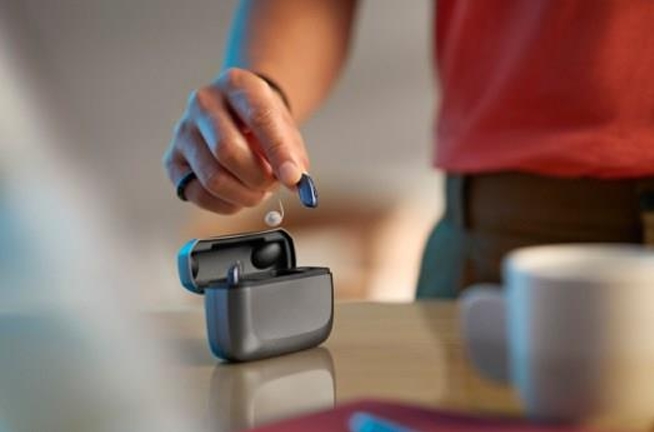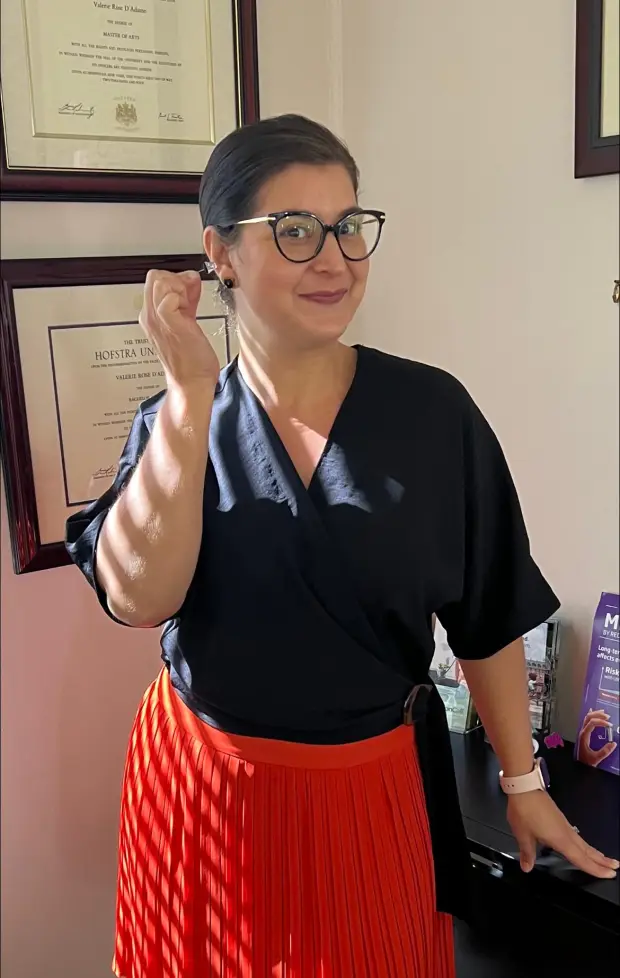Devices block background noise to make conversation clearer. Look at the original article here.

When Joanne Rosen enters a noisy restaurant, the artificial intelligence in her hearing aid listens to sounds and makes adjustments so she can better hear the people at the table.
This type of technology in AI-assisted hearing aids uses data to self-adjust and help the wearer focus on relevant conversations while minimizing background noise. The devices continuously learn to improve the user’s hearing ability in noisy situations.
When Rosen, 73, is shopping for groceries near her home in Weston and a call comes in, the hearing aids block out the background shoppers so she can hear only the caller.
“It’s amazing how I can focus on the call and not hear background noise at all,” Rosen said while in Publix.
All the major hearing aid brands, such as Starkey, Phonak, Oticon, ReSound, Signia and Widex, now make hearing aids that incorporate artificial intelligence and machine learning. Two of the brands — Phonak and Starkey — have just come out with an improved, smaller version that resembles a flat earbud.
“There is so much more technology people are missing because they are consumed by over-the counter amplifiers at retail stores instead of getting fitted for new customized computers they can wear in their ears,” said Valerie Rossetti, an audiologist with Hearing Matters in Fort Lauderdale.
Advancements are happening as need increases: One in four people over 60 is affected by hearing loss. Hearing loss among seniors is expected to worsen.
A relatively recent development is the creation of hearing aids with deep neural networks (DNN), a more advanced version of AI. The hearing aid feeds the deep neural networks with information and uses an algorithm to classify sounds better, improve decision-making, and make adjustments, Rossetti said.
“It makes the sound more pleasing,” she said. “It might not relate to hard numbers in improved hearing scores, but wearers like how it sounds and find them more comfortable. Every year, things get incrementally better.”
The more sophisticated AI-driven hearing aids can analyze 80 million sounds and as many as 2 billion adjustments in a day.
A study by Ohio State University revealed that AI-driven hearing aids increased the ability to hear amid background noise by 55%, and over time, wearing them reduced the effort required to hear by 30%. Technological advances are expected to make wearing aids even more enticing.
Rossetti says making a purchase of a hearing aid with AI is just the first step, though. Her customers return every four to six months for an adjustment and, potentially, an update to the software in their devices.
“As an audiologist, I can see percentage-wise how much noise they have been in, the changes they made versus the changes AI made, and I can make sure the changes AI makes are appropriate for their amount of loss and lifestyle,” she said.
If a customer prefers not to remove their hearing aids, Rossetti said she also offers a device that can be implanted in the ear for periods of up to two or three months. “For patients with memory issues, this is a great option. They can sleep and shower with it,” she said.
Original Medicare does not cover hearing aids or exams for fitting them, but some Medicare Advantage and commercial PPO plans do offer some coverage. Beneficiaries would need to check their specific plan.
For individuals with minimal hearing loss, Rossetti works with them on auditory exercises. Using a mobile app, she recommends that a person work 15 minutes a day to teach their brain how to ignore noise and pick up the speech signal. She can see if patients are logging in and what they are working on.
“Even if they have only mild hearing loss, I want them to keep their brain engaged,” she said.

Valerie Rossetti of Hearing Matters demonstrates an AI-assisted hearing aid. (Hearing Matters/Courtesy)
Hearing loss is a significant risk factor for dementia, and research has found that hearing aids may help prevent or delay its onset and progression.
“If you notice a loss, get evaluated so you can see where you stand and we can come up with a good game plan,” said Caroline Dadowski, assistant professor in the Department of Audiology at Nova Southeastern University’s Dr. Kiran C. Patel College of Osteopathic Medicine.
Dadowski said in addition to AI, the Bluetooth feature on hearing aids is also improving, and some will soon be Auracast-enabled, meaning they can connect to public devices such as the audio from TVs in a gym or airport lounge.
Already, all hearing aids can be paired with smartphones.
“You can use an app on the phone to adjust volume, switch programs for different listening situations, troubleshoot, enable a ‘find my hearing aids’ setting,” Dadowski said. “Some have language translation, and fitness tracking, or you can set reminders to clean them or answer your phone hands-free.”
Dadowski classifies the advancements in hearing aids as incremental, yet definitely improving the user experience. “I wouldn’t say anything has changed the game completely, but there are more advancements in general,” she said. Rosen, who has had her hearing aids for only a few weeks, said she is happy with the advanced features, but mostly appreciates the basics.
“I wasn’t following the conversation around the mahjong table,” she said. “Now I can hear what they are saying.”
South Florida Sun Sentinel health reporter Cindy Goodman can be reached at cgoodman@sunsentinel.com.
Originally Published: October 15, 2025 at 7:00 AM EDT
